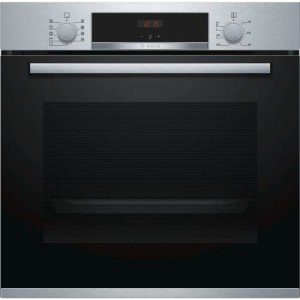The Rise of Built-In Ovens: A Seamless Approach to Modern Cooking
In modern cooking areas, where design aesthetics mix perfectly with functionality, one device stands apart as a true game changer: the built-in oven. As homeowners and chefs alike continue to look for innovative services that boost their cooking experience, built-in ovens have ended up being significantly popular. This post explores the advantages, factors to consider, and patterns surrounding built-in ovens, highlighting why they are an essential feature in contemporary cooking areas.
What is a Built-In Oven?
A built-in oven is a cooking area home appliance designed to be integrated into the kitchen cabinetry of a cooking area rather than standing alone. Unlike standard freestanding ovens, which can be moved and placed anywhere, built-in ovens been available in numerous designs and sizes to fit specifically within designated spaces. Available in single or double configurations, these ovens offer a structured appearance that complements contemporary kitchen styles.
Benefits of Built-In Ovens
1. Suggested Looking at -Saving Design
Among the most appealing advantages of built-in ovens is their space-saving design. By integrating the oven into cabinets, you can free up important counter and floor space. This is especially beneficial in smaller cooking areas, where maximizing room is important. Built-in ovens can be set up at eye level, making them more accessible and minimizing the requirement to flex down.
2. Visual Appeal
Built-in ovens add to a sleek and cohesive cooking area design. Readily available in various surfaces-- such as stainless-steel, black, white, and custom-made cabinets-- they can blend flawlessly into the total design. This visual appeal boosts the cooking area's visual harmony and elevates the space, creating a modern and advanced atmosphere.
3. Enhanced Functionality
Many built-in ovens come geared up with innovative cooking innovations, such as convection cooking, steam ovens, and smart features. These enhancements permit versatile cooking choices, making it easier to attain professional-level results in the house. Smart built-in ovens can even connect to Wi-Fi, making it possible for users to control the oven remotely, get alerts, and gain access to a variety of cooking programs and recipes.
4. Improved Ventilation
Because built-in ovens can be integrated with kitchen area hoods and ventilation systems, they can assist preserve better air quality and reduce cooking odors. This is particularly substantial for those who love to prepare with aromatic spices and active ingredients, as a reliable ventilation system can keep the kitchen comfy and welcoming.
5. Modification Options

Built-in ovens provide a wide variety of personalization choices to match specific cooking styles and requirements. From professional-grade home appliances with multiple cooking modes to compact styles for smaller sized kitchens, house owners can choose the oven that fits their particular requirements. Numerous makers also offer adjustable front panels, enabling you to match the oven's look to your cabinets for a really merged look.
Considerations When Choosing a Built-In Oven
While built-in ovens have many advantages, there are essential considerations to keep in mind before purchasing:
1. Rate
Built-in ovens normally feature a greater cost than their freestanding counterparts due to their style and setup requirements. It's crucial to aspect in both the cost of the oven and any extra expenses associated with kitchen cabinetry modifications or setup.
2. Installation Requirements
Installing a built-in oven frequently needs expert assistance, specifically if you need to modify existing kitchen cabinetry. Make sure that you think about any expenses connected with setup, consisting of labor and prospective cabinetry changes.
3. Size and Dimensions
Before buying a built-in oven, measure the designated space properly to make sure a correct fit. Built-in ovens been available in various sizes and setups, so picking one that lines up with your needs and cooking area design is important.
4. Way of life and Usage
Consider your cooking practices and requires when picking a built-in oven. If you often host large events, a double oven might be more advantageous. On the other hand, if you have a compact kitchen area, a single-wall oven might be enough.
Patterns in Built-In Ovens
The kitchen area appliance market is continuously progressing, and built-in ovens are not exempt from emerging trends. Some current trends consist of:
Smart Technology Integration: With the rise of clever home technology, built-in ovens now frequently include connectivity choices. This enables users to monitor cooking development and change settings by means of mobile apps.
Energy Efficiency: As sustainability becomes a top priority, lots of makers are buying energy-efficient built-in ovens that decrease energy consumption while keeping efficiency.
Multi-functional Designs: Built-in ovens now provide features such as air frying, sluggish cooking, and steaming, supplying adaptability that meets a wide variety of cooking techniques.
Conclusion
Built-in ovens certainly represent an ideal mix of style, function, and convenience in today's kitchens. As more house owners select this modern service, the focus moves to developing a cooking area that is as aesthetically pleasing as it is useful. Whether you are constructing a new home or redesigning your kitchen, considering a built-in oven could elevate your cooking experience and transform your kitchen area into a trendy and practical sanctuary. With an array of alternatives offered and ongoing developments in innovation, built-in ovens remain a standout option for both newbie cooks and culinary enthusiasts alike.
